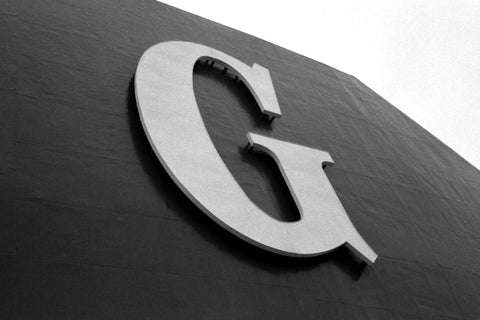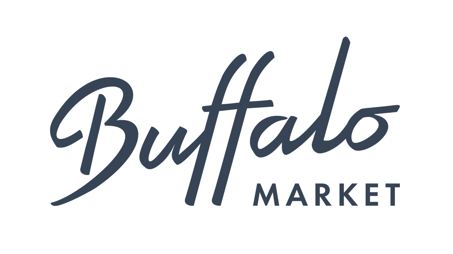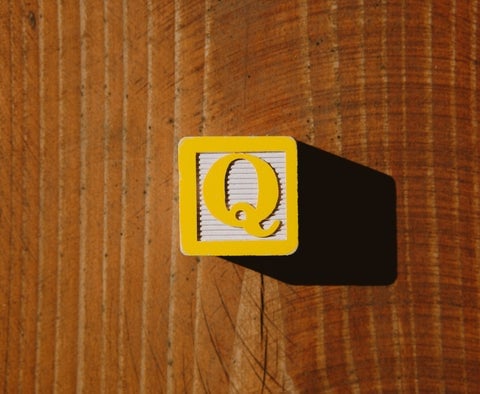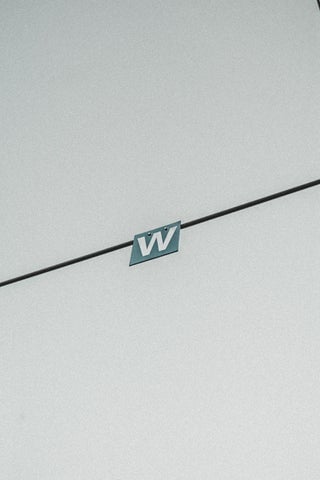Must-Know CPG definitions and Jargon: The Ultimate Guide
The Consumer Packaged Goods (CPG) industry is one of the largest sectors in North America. Valued at approximately $2 trillion dollars, it covers a massive array of products and working practices.
Most of the items you’ll see in grocery stores and wholesalers are consumer packaged goods. From food and beverages to fashion, makeup, cleaning products, and tobacco — there are many sectors and categories involved.
As will come as no surprise, competition for shelf space is fierce. The industry is constantly adapting and investing to match market conditions and consumer behaviors. A vast array of sector-specific jargon has consequently grown up.
To help you navigate this fast-moving industry, we’ve created the ultimate guide to CPG jargon. It can be a confusing industry. If you want to learn more about any of these terms or want to find out how a smart distributor can take a lot of the guesswork out of running your CPG, reach out to one of Buffalo Market's experts today!


A
Absolute Change (Abs Chg): The process of assessing the change to a number of variables across financial years.
Absolute Discount: The monetary difference between a product’s regular sale price and the lower promotional price.
Absolute-Minimum Pricing: The absolute lowest price a product can be sold for.
Advertising Allowance: The amount of money a manufacturer pays a retailer to advertise and promote a product or brand.
All Commodity Volume (ACV): A method of approximating a store’s size. Stores are rated on their total sales volume (i.e. the monetary worth of an entire store’s sales across all products).
All Commodity Volume Distribution Percentage (% ACV Distribution): A percentage gauging the extent of the distribution of a particular product or brand across stores.
All Commodity Volume Merchandising Percentage (% ACV Merchandising): A percentage measuring the extent of merchandising support for products or brands across stores.
All Outlet Combined (AOC): The total market for a product (or brand/product category) across all outlets, including retail, direct, and e-commerce.
Any Promotion: Also referred to as “any merchandising” — stores that allow various forms of promotion and merchandising. This could include (for instance) Display Only, Feature and Display, or Price Reduction Only.
Approved Product List (APL): The term for the inventory of products authorized by retailers.
Attribute: Also known as “product attributes” or “characteristics,” – the unique aspects that set one product apart from the competition. Attributes include various features such as appearance, packaging, size, branding, color etc.
Authorized Item: Similar to an “approved product list” – a product that’s been approved by a retailer for merchandising and selling.
Average Items Carried (AIC): The average number of items a particular retailer stocks. It can be segmented by category, sector, brand etc. Alongside Average Items Selling, it helps measure Total Distribution Points.
Average Items Selling (AIS): The average number of items (often segmented by category or brand) a retailer actually sells. Alongside Average Items Carried, it helps measure Total Distribution Points.
Average Retail Price (ARP): The average amount spent by consumers on a single unit of a particular product. This is measured across all stores in a particular market.

B
Back Stock: The number of products available to restock in-store displays.
Backorder: When a product is currently out of stock but is being reordered.
Balanced Features: A merchandising term referring to when short-profit and long-profit products are presented together as a combination sale.
Banner: Either – the overall operating name of a retailer (i.e., the name that consumers would know a store by, such as Walmart) or – a form of in-store advertising to highlight particular brands or products.
Bar Code: A machine-readable code in the form of numbers and parallel lines printed on a product’s packaging. Primarily used for stock control, it contains a product’s Universal Product Code (UPC) and other identifying information.
Base Price: The basic cost of a product (usually calculated by dividing the overall cost by unit volume).
Base Sales: The amount of a product that’s sold (or projected to have sold) without any promotions.
Base Weighted Weeks (BWW): A measure of the quantity of promotional support a product has received. Unlike Cume Weighted Weeks, BWW reflects the relative significance of individual retail stores for sales of a product.
Basket Size: The amount spent by customers (often across multiple products) in a single transaction.
Benchmark: A specified standard that any promotional or sales activity can be calculated against.
Bill Back: When a manufacturer is billed by a retailer or distributor after a promotion or performance (such as shipping) occurs.
Bin: A retailer that stores and sells loose or bulk products.
Brand Block: A promotional tactic used by retailers. All of a brand’s products are displayed in the same shelf location – creating a strong visual impact.
Brand Equity: A brand’s value is determined by customer attitudes towards it.
Brand Manager: An individual with responsibility for managing overall marketing and communications for a specific brand.
Buy One Get One Free (BOGO): A promotion allowing consumers to buy one product and receive another (usually the cheaper item) free of charge.
Buy Online, Pick Up In-Store (BOPIS): Also, “Click and Collect” or “Order and Pick-Up” – an e-commerce term where the customer will collect the item in-store, as opposed to getting it delivered.
Buying Committee: A professional group that assesses and manages promotions and the purchase of new products.
Buying Habits: A term describing consumers’ spending behaviors and preferences.
Buying Rate: Also known as “Item Sales per Item Buyer” or “Sales per Buyer,” – a measurement (which can be in dollars, units or volume) of the average amount of a product purchased by an individual buyer or household over one year.

C
Cannibalization: When sales of one product are reduced as a consequence of increasing sales of another.
Case Code: The distinct machine-readable numerical code displayed on a product’s casing and pallets. Sometimes also known as a “Universal Product Code.”
Case Stack: A display technique used by retailers. Cases are stacked on top of each other, with consumers able to take products from the top cases.
Case Stack Deal: A promotional deal for retailers, enabling them to buy multiple cases of a single product.
Category Analysis: An evaluation of a particular category of products to determine strengths, weaknesses, opportunities, threats, etc.
Category Management: The process of analyzing sales, product selection, and promotional history with the aim of increasing sales of a particular product group.
Category Pricing: A pricing strategy used by retailers that sets the price consumers pay for products within a certain category.
Category Review: When a retailer evaluates their product categories (either en-masse or individually) with a view to assessing and improving performance.
Center Store: The center or middle section of a large retailer. Most consumer packaged goods are placed here.
Channel of Distribution: The links ensuring a product is transported from grower to producers, manufacturers, wholesalers, retail stores, and ultimately to consumers.
Characteristic: Also referred to as an “attribute,” – the unique aspects and features that set one product apart from the competition.
Circular: A form of printed or email advertising highlighting current sales and promotions. It is usually sent directly to a large number of consumers.
Club Store: Retail chains that charge annual membership fees (such as Costco or BJ’s Wholesale), usually selling bulk items at cheaper or wholesale prices.
Co-Marketing: Also known as “Co-op advertising,” – when a retailer and product manufacturer work together to create marketing and advertising campaigns.
Competitive Retailer Marketing Area (CRMA): The geographic area in which a retailer operates –used to compare a retailer’s performance against its competition.
Consumer Promotion: The various marketing and advertising tactics used to encourage product sales and brand awareness.
Convenience Channel: Also known as “C-Stores,” – one of the most common retailers within the CPG industry. Convenience stores (such as gas stations) offer a smaller range of products to consumers. This often includes pantry items, alcohol, and “on-the-go” snacks.
Cost of Goods Sold (COGS): The total costs involved with the manufacturing, selling, promoting, and distributing of consumer packaged goods.
Coupon: A promotional offer (usually in printed form) allowing consumers to redeem a monetary discount at the point of sale.
Cross-merchandising: The practice of displaying related products (from separate categories) together to encourage additional purchases. For example, beer and nachos or pancakes and syrup.
Cume Weighted Weeks (CWW): Cume is short for “cumulative,” whereby the reach and frequency of merchandising support are assessed over a given amount of time.
Cut In: When a retailer introduces a new product, necessitating a change to existing product shelf placements.
Cycle: The period an in-store promotion or event will run for (usually two weeks to one month).

D
% Discount: The percentage amount that a promotional price falls below a standard retail price.
Deal Pack: A method of packaging several products together to emphasize consumer promotions.
Department Manager: The individual responsible for managing a particular store department. Jobs include ordering products, overseeing marketing, and organizing price markdowns and sales reports.
Direct Buyer: A product buyer that purchases straight from manufacturers (as opposed to using a wholesaler).
Direct Store Delivery (DSD): When a manufacturer delivers products directly to retail stores as opposed to
distribution centers. Buffalo Market happens to specialize in white glove-style DSD distribution. Contact us to learn more

Display: A temporary secondary location within a retail store, different from a product’s standard shelf location. This usually takes the form of an endcap or in-aisle display in situ for up to two months.
Display Execution: A quantification of consumer purchases made from a display whilst a promotion is running.
Distributor’s Brand: Privately labeled product brands created, owned, and managed by retailers.
Dollar Sales: The dollar amount generated by product retail sales.
Dollar Store: A retailer that typically (although not exclusively) sells its products for $1.

E
Early Bird Allowance: An incentive given by manufacturers to encourage retailers to order produce in advance.
Electronic Data Interchange (EDI): The direct sharing of data through standardized computer formats.
Everyday Low Price (EDLP): Also known as “Everyday Value” (EDV) – when a retailer prices a product consistently, without promotional discounts.
Electronic Retailing: Also known as “E-Tailing” – selling products online, as opposed to in-store.
End Cap: A prominent merchandising space (usually reserved for promotions) located perpendicular to the end of store aisles.
Equivalized (EQ) Sales: The physical volume of a product sold by a retailer. Units are relevant to the category, used when comparing products of different sizes. Common EQ sales units include pounds (LBS), ounces, gallons, or cases.

F
Facing: Rows of product stocked on store shelves or displays “facing” the consumer. Brands with high sales often have more facings.
FDM (Food/Drug/Mass-Merchandise): A market segment of retail channels specializing in food, beverages, medicine and general household products.
FDMx (Food/Drug/Mass excluding Walmart): A retail market segment (see FDM), excluding Walmart.
Feature: A printed advert (commonly placed by retailers), which could be in a newspaper, direct mail campaign or in-store magazine.
Field Representative: Agents (usually working on behalf of manufacturers) that travel to retailers in order to negotiate sales, deliver and discuss products.
Freight on Board (FOB): The price paid by distributors at the point that products are picked-up from manufacturers.
Food Mass Merchandiser: A common type of retailer offering a large assortment of food (and non-food) products.
Forward Buy: Also known as “Buyout” – where products are held in backstock up until the end of a promotional period in order to increase sales profits.
Free Fill: Products given for free (or “sold at no charge”) to retailers – usually to encourage distribution and future sales with a specific store.
Frequent Shopper Program: A marketing tactic where regular customers have a profile (usually in the form of a membership card or phone number) through which they receive product discounts and other benefits.

G
General Merchandise: Non-food packaged goods – most often products with high sales volume and comparatively low prices.
Generic Brand: A product that is sold without a specific brand name.
Giveaway: A promotion in which customers receive free product(s) when purchasing another.
Grocery Wholesaler: Someone who purchases goods from manufacturers in order to sell them on to multiple retailers.
Group Advertising: When retailers combine advertising budgets to improve efficiency and reduce cost.

H
High-Low Pricing: A marketing technique where a high retail price is set for a product, subsequently reduced in promotions.
Hip Pocket Deal: A price reduction given by manufacturers to certain retail accounts.
Horizontal Display: When similar products are placed in one line along a shelf – forming a horizontal pattern.

I
Impulse Product (or purchase): A product bought on a spur-of-the-moment decision rather than a planned purchase. This is often triggered by in-store displays. Batteries, magazines, sweets, and chewing gum are common examples.
In-Ad Coupon: Coupons placed in a retailer’s printed advertisements, usually limited to specific products and timeframes.
Incremental Revenue (or Volume / Lift / Sales): The difference between projected baseline sales volume and the sales actual volume. Incremental revenue is usually measured after a trade promotion for a specific product. The value can be negative if sales are less than expected.
Independent: An independently owned retailer that secures stock through a central supplier.
Indirect Selling: When manufacturers sell their products to wholesale merchandisers. These merchandisers will then go on to sell products to retail stores.
In-Line: Products presented according to the agreed shelving planogram. (See: “Planogram”).
Institutional Buyers: Or “Industrial Buyers” – organizations such as schools, cafes, and restaurants that purchase products directly from a wholesale grocer.
In-Store Coupon: Coupons collected within the store, for instance, via POS systems, via shelf dispensers, kiosks, or directly on packaging.
Instant Redeemable Coupon (IRC): Coupons usually found on packaging, designed for immediate use by consumers.
Information Resources Inc (IRI): A corporation that collects and analyses sales data from retailers, selling reports to manufacturers.
Island Display: Freestanding merchandising that allows for products to be displayed on all consumer-facing sides.
Items Per Hour: The average amount of a particular product that’s sold within a single hour.

K
Kitting: The combination of in-store marketing materials to create a promotional “kit.”

L
Landed Cost: The amount a distributor charges for picking up and delivering products, including all freight charges.
Lift: Also see “Incremental Revenue” – the percentage of increased sales, calculated by dividing baseline sales by incremental sales and multiplying the result by 100.
Line Extension: When a brand adds an additional product to its sales lines. This could be anything from a new flavor or recipe to size or packaging shape.
List Price: Also known as “Base Price,” – the basic cost of a product (usually calculated by dividing the overall cost by unit volume).
Logistics: Covering all the activities related to the purchasing, storage, and delivery of products.
Loss Leader: Products that are priced at or below cost – a technique used by retailers to encourage in-store visits and additional purchases with higher profit margins.

M
Market Share: How well a product performs in relation to its competitors.
Manufacturer Chargeback (MCB): Charges sent from distributors to manufacturers, calculated on the number of product cases shipped to a retailer.
Merchandising Condition: Terms agreed between manufacturers and retailers, where manufacturers pay retailers to promote their products. The four most common conditions are: Temporary Price Reduction (TPR), Feature and Display (F&D), Feature without Display, or Display without Feature.
Merchandising Efficiency: The effectiveness of merchandising efforts, excluding any promotional activity.
Multi Outlet (MULO): Retail channels including FDM (Food, Drug, Mass-Merchandise), Walmart, Club, and Dollar Stores, as well as Military DECA (Defense Commissary Agency).
MULO-C: All MULO retail channels, as well as convenience stores.
Mystery Buyer: When an anonymous “consumer” visits stores in order to evaluate aspects such as store presentation, customer service, or product displays.
N
National Distribution: When products are sold across all major retail stores and regions of the grocery network.
Natural Channel: Also known as “Organic Channel” – specialist retailers that predominantly stock natural or organic products.
Nielsen Company: A company that retrieves POS scanner data from retailers. Analysis and data sets are then produced for both manufacturers and retailers.
Nitro Software: Nielsen software used for analysis and reporting on sales data. The program provides database access through Microsoft Excel.
Non-Additive Fact: A database term for a fact/measurement that should not be summated over time/market/product. For example, price is non-additive. Dollar and unit sales, on the other hand, would both be additive (i.e., increasing over time).
Non-Promoted Price: The price paid for a product (by consumers) when it’s not under discount.
Non-Promoted Sales: The number of product sales when no in-store promotional activities have taken place.
Numeric Distribution: Also known as the “Percent of Stores Selling” (PSS) – the percentage of stores within a given geographic location where a product is sold.

O
Off Invoice (OI): Discounts given by manufacturers at the point orders are made.
On-Pack Promotion: Sometimes known just as “On-Pack” – coupon offers or marketing messages attached directly to product packaging.
Out of Stock (OOS): When a product is (temporarily) unavailable for sale. This could result from higher-than-expected sales in-store, or other delays between manufacturers and distributors.
Over the Counter (OTC): Medication that doesn’t require a doctor’s prescription to buy.
Overlay: A promotional technique where advertising materials are adapted to include additional features or customized to specific retailers.

P
Pallet Display: A specific type of display constructed on standard pallets, allowing for ease of shipping and installation in stores.
Penetration: A data management term measuring the percentage of households that have purchased a product or shopped with specific retailers.
Percent Change (% Chg): Most often used when comparing performance in one fiscal year against another.
Perpetual Inventory System: An in-store system that keeps stock levels steady, keeping track of all deliveries, credits, and sales.
Placement Allowance: A manufacturer’s budget for securing shelf space for new and promotional products.
Planogram (POG): A diagram directing the placement of products within retail stores. Planograms often refer to specific SKUs created for product categories and sub-categories.
Point Change (Pt Chg): A similar measure to “Absolute Change” – used for figures already expressed as a percentage. For instance, the point change between 8.4% and 9.7% would be 1.3.
Point of Purchase (POP): The location of consumer transactions, usually referring to retail stores.
Point of Purchase Display (POP Display): A merchandiser holding products near checkouts, usually designed to increase the number of impulse purchases.
Point of Sale (POS): The point at which products are scanned through store checkouts and transactions are completed. Sales data will be collected at this time.
Price Decrease: Also known as a “Temporary Price Reduction” (TPR) – when retailers temporarily reduce product price by at least 5%. If price decreases last longer than seven weeks, they are considered the new standard price.
Price per EQ: The amount paid by consumers per Equivalized Unit. See also “Equivalised Sales.”
Price per Package: Also known as “Price per Unit” – the amount consumers pay per product package. It is usually used to compare prices of comparably sized products.
Private Label: Product lines sold exclusively by a retailer who also owns the brand. This is different from an “Exclusive Brand,” where product lines are sold only by specific retailers, but manufacturers retain ownership of the brand.
Profit and Loss (P&L): A financial term encapsulating the total income and costs incurred during a specific period.
Promo ARP: The average retail price (ARP) paid by consumers per product unit where promotional activity took place.
Promoted Price: The price consumers pay for a product during a sale period.
Promoted Product Group (PPG): When a set of Universal Product Codes (UPCs) are priced and marketed together – usually to promote items of a similar size.
Promoted Sales: The dollar amount of product sales with some form of merchandising. This metric is often used to calculate merchandising efficiency and assess levels of promotion.
Promotion: A marketing term for any activities designed to encourage consumer purchases. Within retail stores, “promotions” may also refer to temporary price reductions.
Promotion Allowance: A monetary figure (usually in the form of rebates or discounts) given by manufacturers to retailers in exchange for product marketing.
Promotional Display: Where product displays are combined with some form of marketing activity, usually limited to a specific timeframe.
Purchase Allowance: When a manufacturer reduces the amount retailers pay per case if orders are placed within a set promotional period.
Purchase Frequency: The recurring rate at which a product is bought by the average single household, measured across a specific time period.
Purchase Size: The average quantity of a product bought by a single household, measured per shopping trip.
Q
Quality Discount: A price reduction if a greater number of cases are purchased in a single order or specified time period.
Quality Merchandising: Covering all forms of merchandising and promotional activities, excluding Temporary Price Reductions (TPR).
Quality Weighted Weeks (QWW): A derivation of Cume Weighted Weeks (CWW), where the reach and frequency of merchandising support are assessed over a given amount of time. For QWW, only weeks where products have Feature or Display (excluding TPR only) would be included.
R
Rack: A floor stand typically built from wire or metal – used for displaying specific products.
Rebate: A form of promotional discounting where consumers purchase products at full price and later submit information (usually online, though sometimes by mail) to obtain money back.
Regular Price: The price a consumer pays when products are not under any form of promotional discount.
Remaining Market (ROM): A term for the geographical area in which competitors operate but your business is yet to enter. ROM is usually used as a mark of potential business opportunity.
Reset: When major changes are made to existing planograms or department layouts – usually to incorporate new product lines, fixtures, or design updates.
Retail Channels: A broad term for any consumer-facing stores (including all MULO-C).
Retailer Marketing Area (RMA): Also known as “Trading Area” (TA) – a geographic area (used for reporting) created in relation to individual retailers. These areas can cross state borders – for instance, Walmart Los Angeles, Walmart Pacific States, Total Walmart, etc.
Radio Frequency Identification (RFID): A technology (in the form of attached data chips) that uses electronic product codes to provide the exact position of pallets, shipping cases, or individual SKUs.
Return on Investment (ROI): The amount of monetary gain or loss a business experiences in relation to a specific investment.
Rotation List: When products (usually seasonal items or limited editions) are only available for purchase in retail stores within a specific time period.
S
Sales Area: The main area within retail stores, dedicated to consumer-facing facilities such as the display of products, customer services, and check-outs.
Sales per $MM ACV (“Sales per Million”): A measurement referring to the rate at which products are sold. It’s commonly used when comparing sales across markets with different distribution levels. This measure is calculated by dividing the sales measure (such as units and dollars) by the market’s All Commodity Volume (ACV) in millions.
Sales per Point of Distribution (SPPD): The number of products sold per distribution point (i.e., a specific market or retailer).
Sampling: A marketing tactic where full-size or mini products are given free to consumers. This usually happens alongside in-store demonstrations when new products are launched.
Seasonality: The way in which product sales increase or decrease at certain points of the year.
Secondary Display: When a product is placed in another location as well as its primary shelf position.
Sell In: A term referring to retailer approval for in-store promotional campaigns.
Sell Sheet: Information published by manufacturers to assist sales pitches to retailers. A sell-sheet will typically include detailed information on product display options, promotional offerings, pack sizes, and weights.
Shelf Life: The amount of time a product can be displayed in-store before it starts to spoil. This should not be confused with expiration dates, which tell consumers the last day a product is safe to consume.
Shelf Price: The product price on store shelves. This can include base prices and promotional prices.
Shelf Talker: Signs attached to the edge of shelves, often used to emphasize temporary promotions or new products.
Shipper: A complete display delivered in one carton, including all packaged merchandise. Shippers are designed to be constructed quickly and efficiently in-store.
Shopper Marketing: Promotional activities (informed by consumer psychology insights) specifically aimed at customers within store environments.
SKU rationalization: A process of analyzing the sales and profit levels for specific products (usually with the intention of reducing the number of SKUs in a category) to decide whether products should remain on sale in retail stores.
Slotting: A fee paid to retailers in return for stocking a specific product. Slotting fees usually cover administrative costs of adding new items alongside potential lost sales, with room given to “unproven” products.
Specialty Channel: Retail stores selling specific types of products (for instance, organic or environmentally-friendly).
SPIFs: Monetary bonuses (paid by manufacturers to sales representatives) to reward success.
Static Panel: Sometimes also referred to as a “Longitudinal Panel” – a term used in the context of household panel data (i.e., assessing consumer behavior over time), referring to a subset of registered panelists. To be incorporated in the static panel, data points have to meet time requirements (for instance, two years in the panel) as well as the number or frequency of reported transactions.
Stock Capacity: The number of products that can be displayed and stored on store shelves.
Stock Keeping Unit (SKU): A numerical identification assigned by retailers. This can be applied to specific products, brands, or packaging sizes.
Store Brand: Products marketed under the retail channel’s brand name.
% Subsidized Volume: The proportion of sales during promotional activities that would have been sold during a “normal” sales period. This is calculated as Promoted Sales minus Incremental Sales, then divided by Total Sales. A lower figure represents a better result.
Suggested Retail Price (SRP): A figure recommended by manufacturers for how much a product should cost in-store.
Sweepstakes: A promotional event where consumers have the opportunity to win prizes.
T
Temporary Price Reduction (TPR): A promotional tactic where product prices are reduced for a short amount of time.
Tie-In Promotion: A marketing method where two products are paired together for sale. One product will often be significantly reduced or free with the purchase of the other product.
Total Distribution Points (TDP): A measure of distribution (most commonly used for brands as a whole, although sometimes product categories), including both %ACV Distribution (reach) and Average number of Items Carried (depth).
Trade Promotion: When a manufacturer pays retailers to launch in-store promotions with the aim of increasing product sales and brand awareness.
Trading Area (TA): Also known as a Retailer Marketing Area (RMA) – a specific geographic region to assess retail channel performance. Regions can cross state boundaries but usually have similar demographics and buying patterns.
U
Uniform Communications System (UCS): An electronic system designed to share data between manufacturers and distributors. This can include information such as order quantities, promotions, or price changes.
Unit Sales: The physical volume of products sold in retail stores, usually expressed in packages.
Unplanned Purchase: A spur-of-the-moment purchase decision made by consumers in-store.
Universal Product Code (UPC): A unique combination of numbers assigned to products, used for identification purposes. UPCs are usually printed on packaging with accompanying barcodes for scanning at checkouts.
V
Velocity: A term describing product sales measured against the overall category.
Vendor Shop: A specific area within a store committed to promoting a particular brand or product supplier.
Violator: Either – signage affixed perpendicular to the main shelf, thereby sticking into (or violating) the aisle. Or – “call out” visuals added to packaging (usually in the form of a sticker) to advertise specific features.
Volume Decomposition: Also known as “Volume Decomp,” “Due-To,” and “Volume Bridge” – analysis of sales change in relation to various business drivers (for instance, distribution, pricing, or merchandising).
W
Warehouse: A key part of the supply chain – distribution hubs that work with retailers, distributors, and manufacturers to store and transport products.
Weekly Sales Log: A record and total of sales throughout the week, usually accompanied by a description of any factors impacting sales.
Wholesaler: A business that purchases products directly from manufacturers.
Wing Display: A temporary display feature (also known as a “sidekick”) affixed to the side of an end cap. An end cap is one of the most prominent merchandising spaces, located perpendicularly to the end of store aisles.
Weighted (WTD): A measurement used in distribution that gives more “credit” for distribution to larger stores than smaller retail outlets. Weighted measures are most commonly assessed by All Commodity Volume (%ACV) – i.e., the total sales for stores across all products.
X
xAOC: Standing for “eXtended All Outlet Combined” – a Nielsen term. The measurement includes all retail channels with the exception of convenience stores (see also: MULO).
XLerate: A legacy Excel database software previously used by IRI (Information Resources Inc, a data and market research company) for analysis and reporting.
Y
Year Ago (YAG): A comparison across calendar years used for comparing broad consumer trends.
Year to Date (YTD): A term referencing either the calendar year or fiscal year to date.
Z
Zero suppression: When the Universal Product Code (UPC) is shortened by eliminating any zeros.
Zoning: When sets and categories of products are organized to match store planograms (See: Planogram).
Work with a food and beverage distributor that knows the ropes
The team at Buffalo Market comes from backgrounds in every facet of the CPG industry. Not only are we extremely well-versed in all things CPG and distribution, but we are also the fastest, most transparent, and most brand-friendly food distributor on the market.
Schedule a call with one of our experts to find out how Buffalo Market can help scale your business to the next level.












